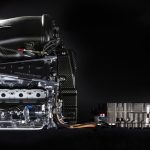Every now and again I write something about which I have so little insight and expertise that I’m barely qualified to even weigh in with my opinion.
Unlike a lot of armchair experts on social media – the modern day equivalent of the guy at the end of the bar who knows everything, has been everywhere and done it all, but for some reason finds himself on his own in a pub on a Tuesday afternoon, desperate for someone to talk to – I am aware of the limit to my knowledge & experience.
My opinions are unashamedly those of a fan and come without the technical detail and insider info that you’ll get from someone directly involved in Formula 1.
If it’s news direct from the paddock you’re after, check out Joe Saward’s website – he’s never shy of letting you know just how ‘inside’ #F1 he is.
With that in mind, I’ll launch into my latest F1 blog. And today’s subject is power units.
 Power units, or ‘engines’ as they used to be known, could be the most complicated aspect of Formula 1 car design in 2019. So complicated are they that multiple Word Champions Honda took five years to make one that didn’t blow itself to pieces when attempting to complete a race distance.
Power units, or ‘engines’ as they used to be known, could be the most complicated aspect of Formula 1 car design in 2019. So complicated are they that multiple Word Champions Honda took five years to make one that didn’t blow itself to pieces when attempting to complete a race distance.
Don’t ask me how they work, they just do. Mostly.
It began when, under pressure from car makers to make F1 technology more road-car relevant and environmentally conscious, V6 turbo hybrid engines were introduced across the board in 2014.
And with that decision, because these new power units were so costly to develop and – because of their complexity – so incredibly difficult to master, any chance of convincing an engine manufacturer outside Formula 1 that it was a good idea to get involved all but disappeared.
Post 2014 only Honda have attempted it and after five years of misery finally won a race at last week’s Austrian Grand Prix.
This leaves Formula 1 with just four power unit suppliers: Mercedes, who stole a march on the competition at the beginning of the turbo-hybrid era and have never really been caught; Ferrari, Mercedes’ closest challenger; Renault, who were wrong-footed somewhat and have never really recovered; and Honda, who up until now have really struggled.
Three of these four PU manufacturers (Mercedes, Ferrari and Renault) have their own Formula 1 teams.
Because of this, the ‘works’ engine deals that used to be commonplace and that allowed ‘constructors’ (like Williams and McLaren) to compete with manufacturers has been limited to whoever could strike a deal with Honda – the only engine manufacturer without its own team (and their engine was so unreliable that for years it almost precluded anyone using it from being able to compete).
Think Lotus-Ford, Tyrrell Ford, Williams Renault, McLaren-Honda, Red Bull Renault – all constructors with works engine deals that would never have happened if Ford, Renault and Honda also built their own cars.
In the past, should there have been three manufacturer teams in F1, it wouldn’t have been such an issue because there were multiple engine suppliers to power the competition.
Picking a season at random – 1989 – there were eight different engines powering the TWENTY constructors and one manufacturer team.
Engine manufacturers didn’t have the stranglehold on the sport they have today.
If at the end of the 2019 season one of Mercedes, Ferrari, Renault or Honda (who currently supply engines to at least two teams each) pulled out of F1 it would be cataclysmic for the sport, and boy do they know it.
This puts them in a position of great strength when arguing how much say they should have in the future direction of F1 and how big a cut of any profits they deserve.
It also gets in the way of fair competition by introducing a glass ceiling for constructors. Can you imagine Williams – powered by Mercedes – being allowed to beat the Mercedes team? (I mean it seems like a bit of a stretch at the minute for any one of about fifty reasons, but parking reality for a moment and thinking hypothetically!). I can’t see it. I think Hamilton and Bottas would find themselves with a couple of extra power modes not available to George Russell and Robert Kubica.
And in a race, how many times have we seen a Ferrari pull up behind a Haas or an Alfa Romeo (both powered by Ferrari) and them falling over themselves to jump out of its way and then do anything possible to hold up the competition?
Whatever happens with the regulations shake up for 2021 I hope one of its main goals is to make power unit technology such that suppliers are falling over themselves to join, giving the Formula 1 constructor – on which Formula 1 was built – hope of being able to compete in future, which would, in turn, encourage more teams to join the party.

0 Comments